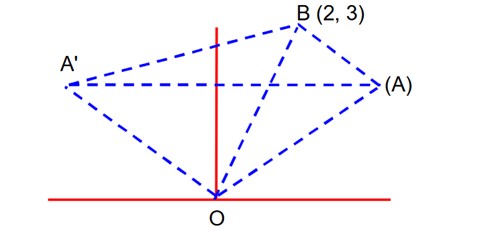Maths NCERT Exemplar Solutions Class 12th Chapter One
Get insights from 126 questions on Maths NCERT Exemplar Solutions Class 12th Chapter One, answered by students, alumni, and experts. You may also ask and answer any question you like about Maths NCERT Exemplar Solutions Class 12th Chapter One
Follow Ask QuestionQuestions
Discussions
Active Users
Followers
New answer posted
4 months agoContributor-Level 10
Case I
When is same as
Then becomes
which is always true, so x becomes tautology.
Case II
When is same as
Then becomes is T, then is false, so x cannot be tautology.
Case III
When is same as
Then is same as which is true, so x becomes tautology.
Case IV
When is same as
Then
is true when p and q have same truth values both are false. Hence x cannot be tautology.
New answer posted
4 months agoContributor-Level 10
sinθ = 0 and 1 + sin θ = 2 cos2 θ = 2 – 2 sin2 θ ………….(i)
θ = np
θ = -p, p, 0
From (i), 2 sin2 θ + sin θ - 1 = 0
(2 sin θ - 1) (sin θ + 1) = 0
sin θ = -1,
is rejected.
T = cos (-2p) + cos 2p + cos θ + cos
T + n(s) = 4 + 5 = 9
New answer posted
4 months agoContributor-Level 10
n = 33, p = success, q = failure
3P (x = 0) = P (x = 1)

Subtracting, (ii) – (i), we get 1320
New answer posted
4 months agoContributor-Level 10
Let (x1, y1) be a point on the curve equation of tangent of eq (ii)
From (i) and (ii) are identical
New answer posted
4 months agoContributor-Level 10
3cos22θ + 6cos2θ -
Þ cos2θ = 0,
Draw y = cos2θ, y = 0 and y = find the pt. of intersection.
New answer posted
4 months agoContributor-Level 10
Let A, A' be (, 2) AB and A'B subtends angle at (0, 0) slope of OA =
slope of OB =
now distance between A'A, (10, 2) &
New answer posted
4 months agoContributor-Level 10
Use aRb = a is related to b, belongs to A iff a belongs to A.
In simple terms, aRb is true if both a & b belongs to the same set.
For reflexive
aRa, a
For symmetric
Let aRb be true
Þ a & b belongs to the same set.
Þ b & a also belongs to the same set
Þ bRa will be true
For transitive
Let aRb and bRc be true.
aRb Þ a, b belongs to the same set
bRc Þ b, c belongs to the same set
Þ (a, c) belongs to the same set
Þ so aRc will be true.
So R is an equivalence relation.
New answer posted
4 months agoTaking an Exam? Selecting a College?
Get authentic answers from experts, students and alumni that you won't find anywhere else
Sign Up on ShikshaOn Shiksha, get access to
- 65k Colleges
- 1.2k Exams
- 679k Reviews
- 1800k Answers

